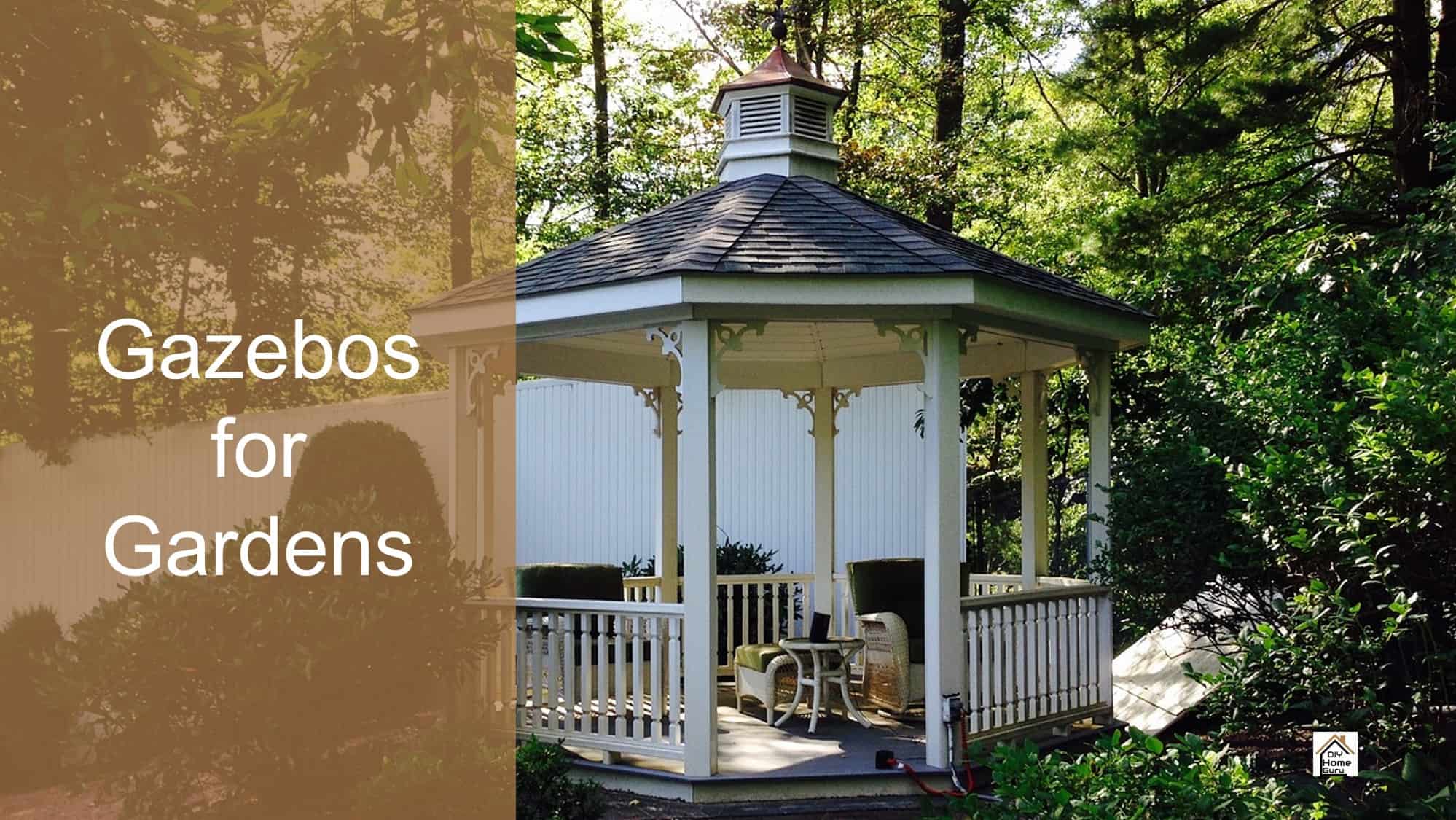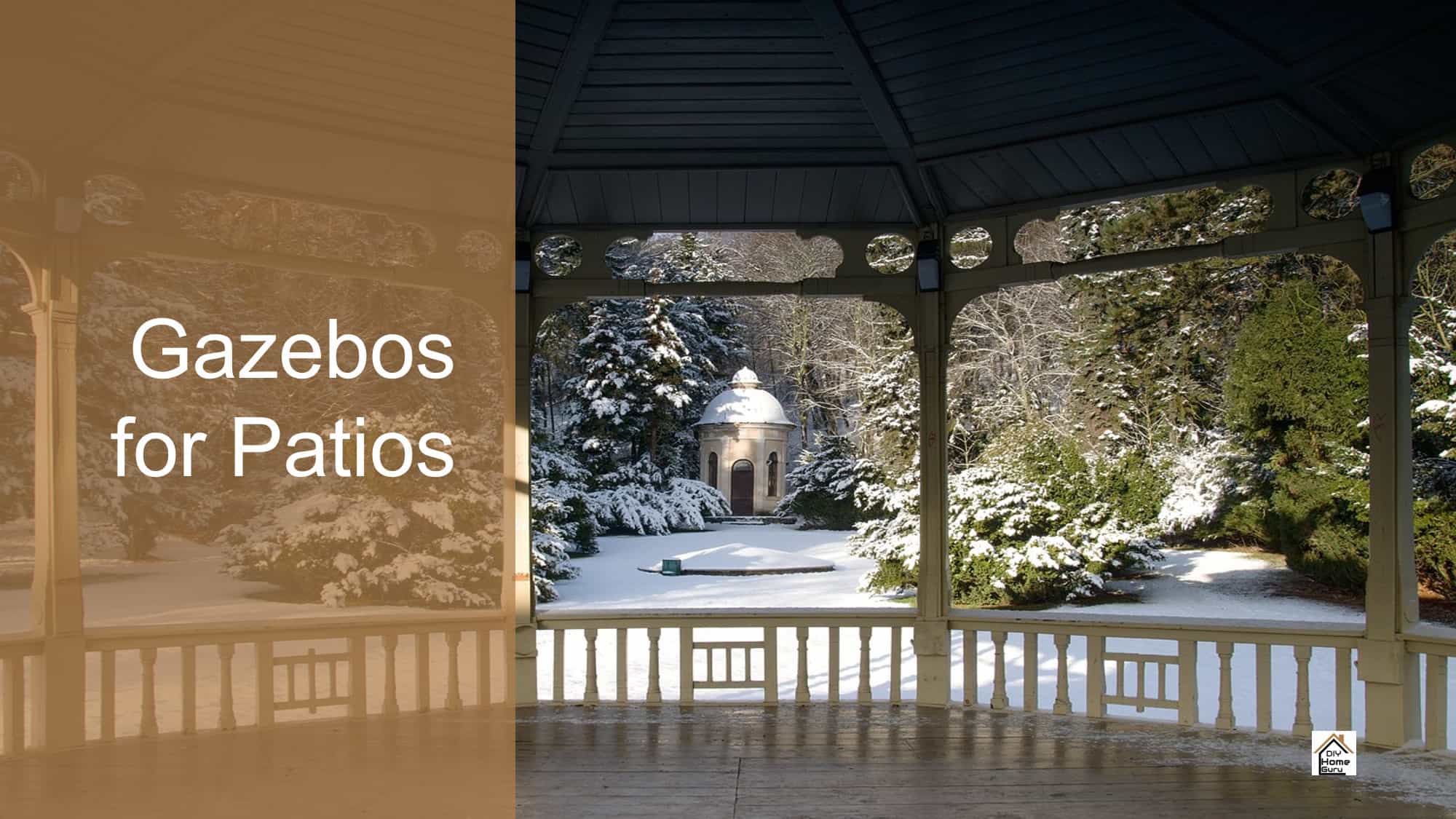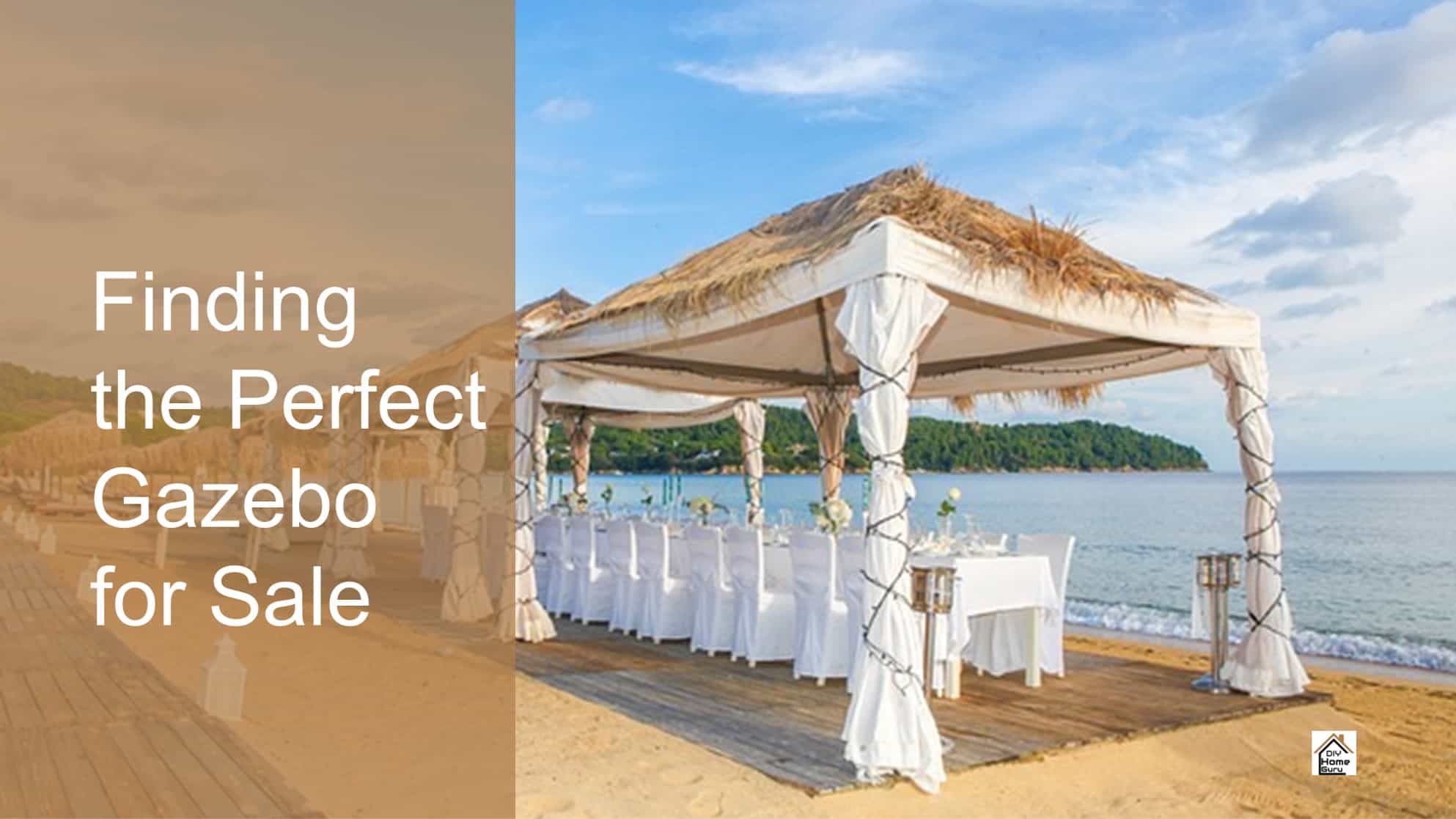Gazebos are not a new invention; they have been around for a long time as an outdoor or garden decoration.
You may see a couple in one romantic moment if you watch old movies. Throughout the centuries, you can see different iterations of these structures.
You may ask yourself the question, what is a gazebo?
What is a gazebo? What does it mean?
A gazebo is a freestanding structure, generally in a manicured garden, with a covered roof and open walls so that you can view the surrounding garden on all sides.
The term ‘gazebo’ comes from a mix of the English word ‘gaze’ and the Latin suffix (word ending) ‘ebo’ meaning ‘I shall.’ That is, ‘I shall gaze.’
Hence, the gazebo is a perfect place in the garden for you to relax and enjoy the beautiful surroundings.
A gazebo is sometimes called an arbor, belvedere, grotto, kiosk, pagoda, pavilion, pergola, screen house or summerhouse.
Where can you find gazebos?
You can find gazebo-like structures in many of the earliest gardens in many cities, including ancient Egypt to many modern cultures.
Egyptian Gazebos
The Egyptians have detailed garden designs with gazebos dating back more than five thousand years.
Egyptian royalty had murals depicting their gardens with the gazebo.
Some historians believe the gazebos were small temples for communing with the gods.
Persian Gazebos
Gazebos were so popular in Egypt that they were passed on to other cultures. In Islamic architecture, a form of the gazebo was created called a kiosk.
The Persian kiosks were slightly different; they were sometimes made of tents with mats on the floor or two-storey structures with domes, marble columns and golden seats.
Roman and Greek gazebos
In this period, gazebo-like structures were built, usually out of marble, to complement the cathedral structures dedicated to the gods.
These public spaces attract the attention of devoted followers of the gods.
It was not uncommon to find gazebos in the private yards of the elites for entertainment and relaxation.
During the renaissance period, the structures could be found on top of other buildings to get a better view.
That is why the Italians called them belvedere, a beautiful view. They became famous as a place of prayer and meditation.
Gazebos in Asia
The Chinese and the Japanese have their version of the gazebo.
They have small garden pavilions, or teahouses considered a place of rest or to get in touch with your spiritual side and enjoy the beautiful garden.
American Gazebos
Gazebos gained popularity in America in the mid-1800s when the new middle class became more prosperous and acted as a status symbol.
Modern Gazebos
Gazebos are structures that add to the view of a yard as a place of retreat disconnected from the house.
In a modern context, these structures suit various designers’ tastes and material choices.
You do not have to commission an architect but purchase a gazebo kit and build it.
Cedar and Redwood gazebos are the most popular for covering outdoor spas and hot tubs.
A glass or windowed gazebo is also helpful for greenhouses, sunrooms, and covered patios.
Conclusion
A garden gazebo is a comfortable place to escape the world, sketch or paint, or just sit and read a book. A folding tent gazebo and pavilion are great covering for barbecues.




